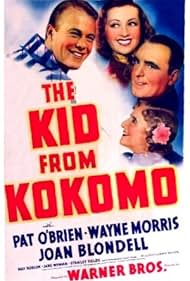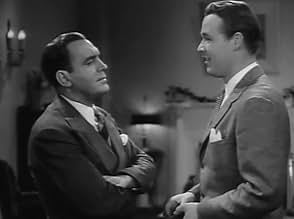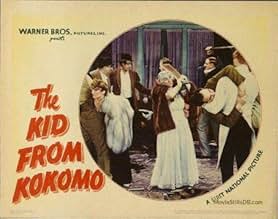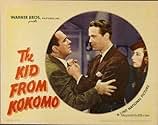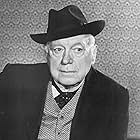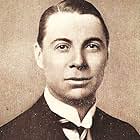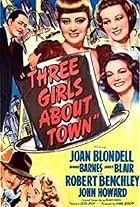WELL NOW, WHAT have we here? In what could very well have been an obscure title that we'd passed up, our fancy was definitely tickled to a very high degree. Although this KID FROM KOKOMO was undoubtedly pre-classified as a "Pot Boiler" and definitely just one cog in Warner Brothers' yearly output, it certainly did it self proud in showcasing its containing pure entertainment and fun. And its lack of any pretension about being cinematic "art" underscores its true mission in pleasing a movie audience.
WE HAVE FORMULATED a few educated guesses in our review and plead "guilty as charged" about our high level of fondness generated.
WE'VE ALWAYS FELT that, whereas there are so many other great and near great examples of great pictures out there in our film archives and we have been blessed with such fine names behind the film industry, that Warner Brothers somehow had always managed to have its corporate finger right on the pulse of American tastes and preferences. This assertion extends all the way, across the board from the Class "A" features., the "B's", Short Subjects and even to their animation department's LOONEY TUNES and MERRY MELODIES.
AT LEAST SOME of the cause behind our thesis is attributable to the background of the Brothers Warner. Sons of Jewish Immigrants from Poland (Russian Empire), after immigrating to America, then to Ontario, Canada, they were raised in Youngstown, Ohio. This,we contend, gave them a less than provincial outlook on the country and the world. It also prevented them from being indoctrinated with any sort of "Big Apple" syndrome. (Although so many of their pictures were centered on life in our greatest city).
ANOTHER ATTRIBUTE WHICH we must bring to the floor is the Warner Brothers' propensity to simplify production matters. Jack W. was once quoted as saying something about if a script is too long to be read while sitting on and using the commode, it was too long.
THE STUDIO ALSO had a knack for taking stage plays , many having been unproduced, and turning them into celluloid gold. This movie would certainly fit into that category. (By the bye, ever heard of EVERYONE COMES TO RICK'S aka CASABLANCA ?)
AS FOR THE production itself, it is fine example of economy of time and shooting schedule. whereas it certainly was no cheapie or poverty row special, it made great use of many preexisting sets. Added to that we have a fine cast top to bottom. We had Pat O'Brien, Joan Blondell and Wayne Morris in the starring roles. In support we have May Robson, a young Jane Wyman, Edward Brophy, 'Slapsie Maxie' Rosenbloom, Sidney Toler (Charlie Chan), Morgan Conway (future Dick Tracy), rising star John Ridgley, Ward Bond and Paul Hurst. In an uncredited role, Al Hill appears (better known to us of the Baby Boomer generation as Heavyweight Champ, "Killer Kilduff" in the 3 Stooges' PUNCH DRUNKS (Columbia, 1934) and as bank robber "Filthy McNasty" in the W.C. Fields starring vehicle THE BANK DICK (Universal, 1940).
AND FOR JUST one last observation, it would appear that the studio was attempting to recapture at least some of the magic that was generated by the previous production of KID GALAHAD (WB/1937), which starred Edward G. Robinson, Bette Davis and Humphrey Bogart. It introduced a young Wayne Morris in a very similar role to this one.
